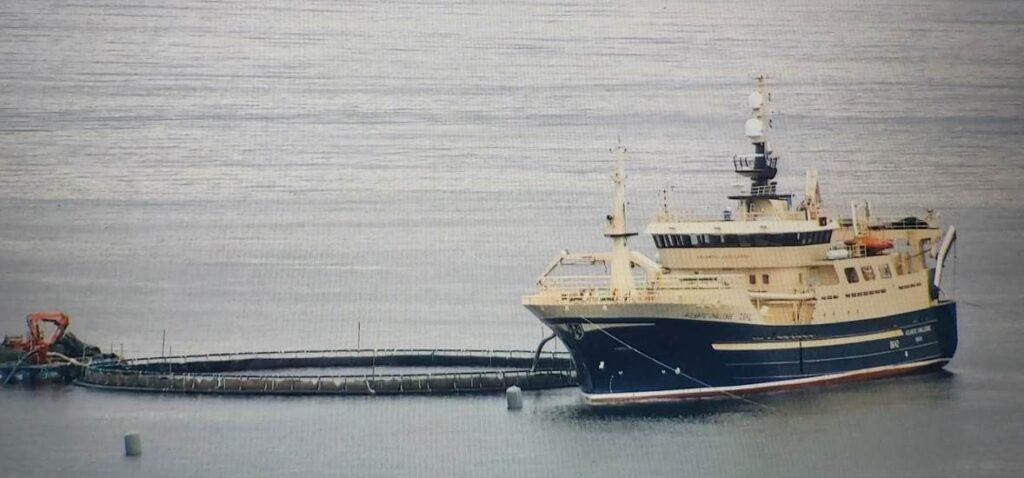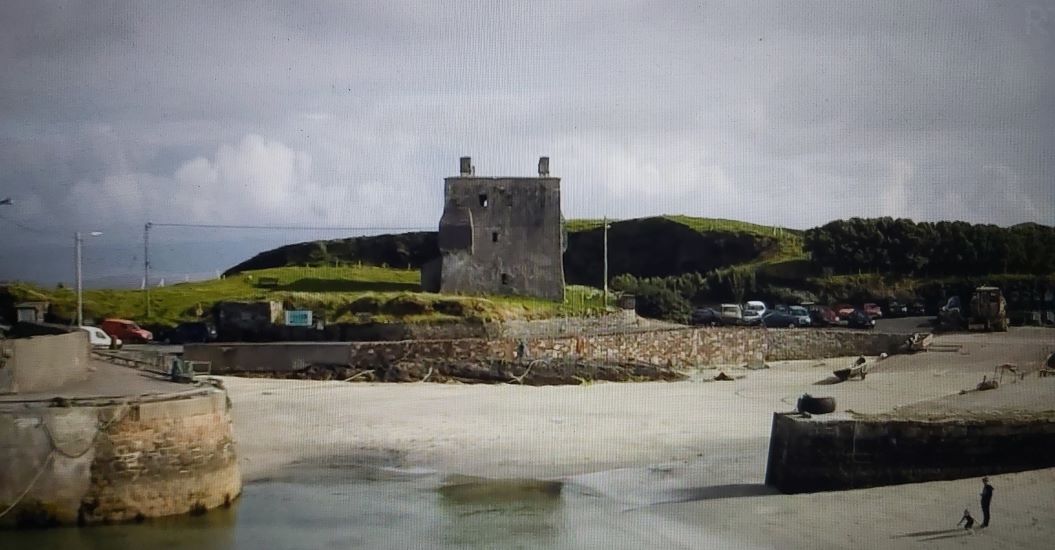The only islands we have so far visited off the west coast of Ireland are Aran Islands (multiple times) and Inisbofin, all in County Galway. And recently we spent a couple of blissful hours on Clare Island, County Mayo, on our cycle of the Clew Bay Bike Trail.
Isn’t There Something Very Romantic About Islands?
These tips of underwater landscapes that you can see from the shore but cannot easily reach without making a real effort to cross the water in-between. Communities forced to be self sufficient by necessity as they get cut off regularly by the tide without a bridge or causeway connection.
All the romantic notions aside, I have no illusions of the hardship of island life, especially in the past. After all, everyone who grew up in Ireland has studied Peig Sayers’ harrowingly raw biography in school. And it haunts me still. But I would absolutely love to spend some time living on one of the Western Irish islands.
Every year I am tempted to apply for the six months long caretaker position on the Great Blasket Island off the Dingle Peninsula. Two people, a couple or friends, are picked every year from hundreds (perhaps thousands) of applications from all over the world. Their task is to look after the visitor centre and the café on this incredible rock for half a year. Accommodation provided. If you fancy your chances, you can check it out here. But this post is not about The Blaskets (although they are on the list of places to visit) but about Clare Island.
How We Travelled To And From Clare Island
We took a ferry from Roonagh Pier beyond Louisburgh to get onto the island with our bikes. We then cycled the short loop around this fascinating historic island before catching a second short ferry ride to Achill. Here we re-joined the Great Western Greenway cycle loop.
As the largest island in Clew Bay, about 160 people live here. Fishing, farming and tourism seem to be the main industries. We didn’t stay overnight so we didn’t need accommodation this time but we spotted several B&Bs. We also passed the Sailors Bar and Restaurant and stopped off at the Stone Barn Café for a delicious refuel. Also check out the Macalla Farm courses and yoga retreats – I am tempted!

Clare Island ‘s Most Famous Daughter
The famous pirate queen, Gráinne Mhaol (Grace O’Malley), lived on Clare Island in the 16th century. Her family ruled the south-west County Mayo for three hundred years. Gráinne was born in 1530 and after the death of her father became the Chief of the O’Malley clan. She married Dónal O’Flaherty and had two sons and a daughter with him. After her husband’s death, many of his clan’s soldiers, interestingly, also followed her as their leader.
Grace’s second husband was Richard Bourke, with whom she had a son Theobald (Tibbot). Legend has it that he was born on their ship just at the time when they were being attacked off Morocco. Gráinne’s men were losing the battle. But then she came up from below the deck having just given birth and led them into victory.
Gráinne Mhaol is said to have been fearless, both on land and the sea, commanding a fleet of ships and an army of 200 men. This was probably the reason why she had a difficult time with the then viceroy of Ireland, Richard Bingham. The Lord President of Connacht, as was Bingham’s title, was forever trying to capture her ships.
Eventually, in order to get to her, he captured one of her sons and her brother. Grace went to look for justice to Elizabeth I herself. You may be aware of the famous meeting of Grace O’Malley and Queen Elizabeth, as it is well documented. Queen Elizabeth then recalled Bingham and ordered him to set Grace’s son and brother free, as well as let Grace and her people live undisturbed.
Grace O’Malley’s Home And Final Resting Place
The O’Malley Castle on Clare Island is in a brilliant strategic position for protection when you’re approaching from the sea. Unfortunately, the castle is out of bounds for visitors as it is not restored. Hopefully, one of the national heritage agencies will take it on and preserve this historic monument for future generations. Fingers crossed.
Another significant historic building on the island is a 12th century abbey, widely valued for its preserved medieval wall paintings. It also has a connection to the O’Malley clan, as it is Grace’s final resting place. She died in 1603, so the abbey predates Gráinne Mhaol by some 400 years. There is a wonderful tomb inside and you can see the O’Malley crest beside it.
The 12th century wall paintings attract visitors from all over Europe, as they are quite unique and not found anywhere else in Ireland. They are secular paintings in a holy place, depicting hunting scenes, dragons, musical instruments, a harpist and an organ player. Grace O’Malley is so important to and such an integral part of Clare Island. People come from all over the world to see where she is buried and where she lived.
The Pirate Queen’s Legacy
Grace O’Malley’s legacy is intertwined with tales of bravery, strategic prowess, and her ability to navigate the male-dominated world of piracy. Grace’s story is celebrated in Irish folklore and history, representing a powerful symbol of independence and resilience. Her exploits have been romanticized and admired as she challenged the norms of her time, earning her the moniker of the Pirate Queen. The islanders themselves are so proud of their heritage and absolutely love to tell her story.
We really enjoyed our first trip to Clare Island and our only regret was we did not have more time. But we will be back!

